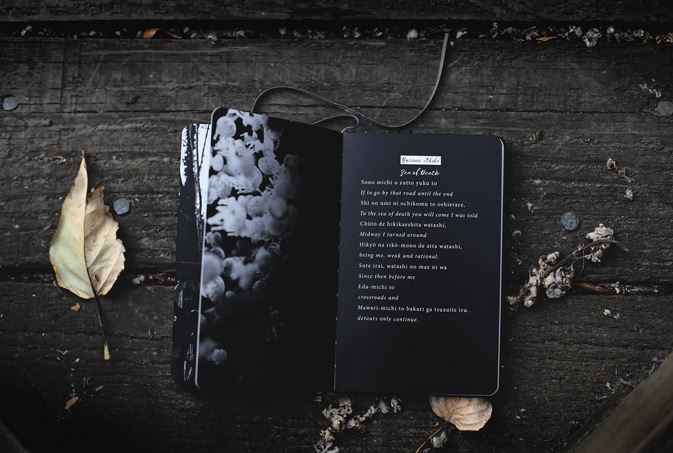Introduction to Poetry and Its History
Poetry has been a vessel for expression since ancient times. From the rhymes sung in communal gatherings to the profound verses scribbled in solitude, each poem carries a piece of its era and culture. But what if we told you that one simple word before in poetry could unlock new dimensions in your writing? It holds the power to evoke nostalgia, anticipation, and reflection, serving as a bridge between past experiences and future possibilities.
In this guide, we’ll dig deep into how before can transform your poetry. Whether you’re an aspiring poet or a seasoned wordsmith looking to reignite your creativity, harnessing this concept can elevate your work like never before. Let’s embark on this journey together and discover the magic hidden within those two little syllables.
The Power of Before in Poetry
The concept of “before” holds a unique power in poetry. It evokes anticipation, nostalgia, and reflection. These moments create tension that can enrich the reader’s experience.
When poets explore what came before, they open doors to deeper emotions. A simple word or phrase can transport us back to past experiences. This connection creates resonance within the lines.
Using “before” allows for contrasting imagery as well. The juxtaposition between present and past reveals layers of meaning. Readers are invited to ponder their own histories alongside the poem’s narrative.
Moreover, this temporal element fosters a sense of longing or desire for change. It challenges both poet and audience to confront what has shaped them.
Incorporating “before” into your work invites exploration of time’s fluidity in human experience—a powerful tool indeed.
Techniques to Incorporate Before into Your Writing
Embrace imagery by painting a vivid scene of what came before. Use sensory details to evoke emotions tied to the past.
Experiment with structure. Start your poem in the present, then seamlessly shift into memory. This contrast can create depth and resonance.
Play with repetition. Repeating “before” can emphasize its significance, allowing readers to linger on those moments that shape experiences.
Utilize juxtaposition. Place contrasting images side by side—what is now against what was once true. This technique highlights transformation and growth.
Consider voice shifts as well. Let different perspectives share their stories of “before,” adding layers and complexity to your narrative.
Engage with time creatively; manipulate it within the lines of your poem, weaving timelines together for a rich tapestry of meaning that captivates readers’ minds.

Examples of Poems Utilizing Before
Many poets have skillfully woven the concept of “before” into their works. This device creates a sense of anticipation and reflection.
Consider Robert Frost’s “The Road Not Taken.” The speaker reflects on choices made in the past, pondering what lay “before” him at the fork in the road. His contemplation resonates with anyone grappling with decision-making.
Another poignant example is Sylvia Plath’s “Morning Song.” Here, she captures moments before dawn breaks, emphasizing transformation and new beginnings. The imagery evokes feelings of hope intertwined with nostalgia In T.
S. Eliot’s “The Love Song of J. Alfred Prufrock,” he frequently references time—moments slipping away before decisions are made or actions taken. This layering enriches his exploration of indecision and longing.
These examples illustrate how integrating “before” can deepen emotional resonance in poetry, inviting readers to engage with both past and present experiences.
How Before Can Change the Impact and Meaning of a Poem
The word “before” holds immense power in poetry. It evokes a sense of anticipation, memory, and reflection. When placed strategically within lines, it invites readers to explore what came prior to the moment described.
Using “before” can shift the lens through which we view an experience or emotion. It adds layers of depth and complexity. Readers become curious about what has led to this point—what choices were made, what memories linger.
Imagine a poem that begins with vibrant imagery but ends with a stark realization. Incorporating “before” creates a contrast that heightens emotional resonance.
It shapes narratives too; bridging past experiences with present emotions can transform understanding. This temporal element allows poets to weave stories that are both personal and universally relatable. Each mention prompts reflection on how previous moments shape current realities, enriching the overall impact of the work.
Tips for Overcoming Writer’s Block with Before in Mind
Writer’s block can feel like an insurmountable obstacle. However, thinking about the concept of “before” can offer a fresh perspective.
Start by reflecting on events or emotions that preceded your current struggle. What inspired you to write in the first place? Digging into past experiences often uncovers hidden gems.
Try writing prompts centered around “before.” For instance, describe a moment before a significant life change. This technique not only stimulates creativity but also connects you with deeper feelings.
Consider creating lists of memories, thoughts, or even dreams that resonate with “before.” These snippets can ignite ideas and transform your blank page into something rich and vibrant.
Embrace free-writing sessions focused solely on what came “before” any major event in your life. Letting go of structure allows inspiration to flow freely without judgment or restrictions.
Conclusion:
Embracing the concept of “before” in poetry can unlock new dimensions to your creative expression. It invites you to explore memories, moments, and emotions that shape your voice as a poet. By weaving the essence of past experiences into your verses, you breathe life into themes of nostalgia, anticipation, or even regret.
The techniques discussed allow for a deeper connection with readers. They encourage exploration beyond mere words on a page—inviting them to journey through time alongside you. Poetry becomes not just an art form but also an emotional experience.
Taking inspiration from poems that effectively utilize “before” opens doors to endless possibilities. Whether you’re reflecting on personal stories or collective histories, this focus creates layered meanings that resonate deeply.
